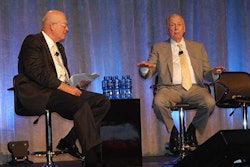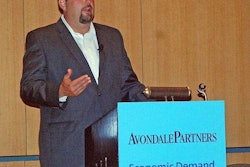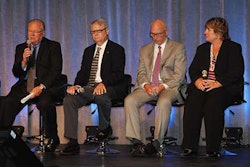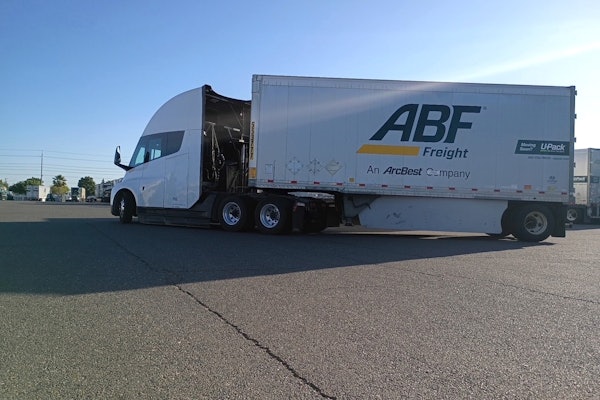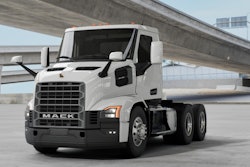A panel discussion on August 21 at the Commerical Vehicle Outlook Conference looked at current fuel economy trends in the North American Class 8 market. The panelists concluded that while exciting new technologies are on the horizon that could one day boost heavy-duty truck efficiencies, recent projects, such as the EPA-sponsored SuperTruck program are already yielding substantial, verifiable, real-world improvements.
Derek Kaufman, chief operating officer for Mission Motors, moderated the panel, which included Craig Bennett, Vice President, sales and marketing for Utility Trailer, Jim Fier, chief engineer, on-highway engines, Cummins Engine Co., David Hames, general manager, marketing and strategy, Daimler Trucks North America, and Max Fuller, chairman and chief executive officer for U.S. Xpress.
Kaufman opened the session by outlining a series of new and intriguing fuel economy solutions emerging around the world, including a Shaped Magnetic Field Resonance (SMFIR) system in South Korea (vehicles essentially follow a designated lane path with vehicle power generated through magnetic resonance from conduits buried beneath the road) as well as lightweight materials, gels and even experimental road trains (running now in Sweden, in which passenger cars fall in behind a heavy-duty truck, which essentially takes command of the cars and creates a “highway train”).
In the here and now, though, Fier notes that Cummins is a full year ahead of looming EPA Greenhouse Gas Regulations that will boost heavy truck fuel economy soon. He also says that with EPA emissions regulations addressed for now, engine manufacturers like Cummins can now free up significant resources to concentrate on fuel economy.
Likewise, Hames, with Daimler Trucks, says his company is constantly exploring new technologies, systems and vehicle configurations to make its product more efficient for its customers, often leveraging technology from its partners in Europe and Asia. Already Hames says, design aspects gleaned from the company’s SuperTruck involvement have found their way onto the in-production Cascadia Evolution tractor. “But,” Hames said, “I think we’re getting to the point of diminishing returns on what we can do with a vehicle chassis. We’re doing a lot more now to integrate our drivetrain technology and develop a more efficient product.”
Bennett noted that trailer aerodynamics have gained widespread acceptance, a trend Utility sees in its current production lines. “About 36 percent of the trailers we build today go out the door with our aerodynamic skirts installed,” he said. “We figure another 15 percent or so have these devices installed after they are delivered. So we feel fully 50 percent of all the new trailers we see are fitted with skirts. So it’s really moved beyond something fleets had to do as a compliance issue to something they want to do because it’s saving them money.”
Max Fuller said is pleased with recent OEM efforts to improve fuel efficiency, noting that the new trucks he’s receiving today are getting 1 mpg better fuel economy than the same models he received last year. One of his biggest challenges, though, is driver performance.
“The driver today is really the wild card when it comes to fuel economy,” Fuller said. “We know now that simply spec’ing an automated manual transmission can boost a bad driver’s fuel by as much as 5 percent — and a good driver’s by 1 to 2 percent. But you have to have a proper incentive plan in place to encourage fuel economy. We’ve studied the problem and found that the difference between a good and bad driver, in identical trucks, pulling the same loads over the same roads can be as much as 1 mile per gallon. And the problem follows the driver if you have them swap trucks. So it’s something we’re working on and will continue to work on because it can really help our bottom line if we can get all our drivers focused on fuel.”



